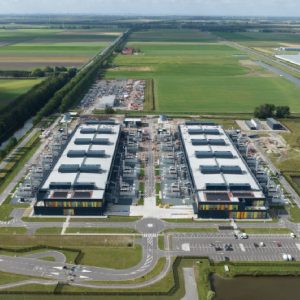
A UK-headed Science Data Processor (SDP) consortium has completed its engineering design work of supercomputer hardware platforms, software and algorithms required to operate one of the world’s largest telescope arrays.
The Square Kilometre Array (SKA) will be constructed in two locations, one in Australia and the second in South Africa. Working together these arrays will be able to collected data from an area that is over one square kilometre or 1,000,000 square metres.
Each telescope configuration will have a central core, one in Australia and the second in South Africa. Spiralling out from the central core will be thousands of dishes mixed with numerous low and mid-range frequency aperture array telescopes. All these receivers are separated by vast distances creating what is a called a long baseline interferometer array.

The distance between each receiver is calculated precisely using the time difference between the arrival of radio signals to each node in the network. This array will use high performance computing to calculate how to correctly combine the data and radio signals collected by each receiver, this results in the array acting as one large telescope scanning the night skies.
Not only does this type of telescope offer a scanning ability of new scales, but it can also be sectioned into multiple smaller telescopes if needs be, allowing the network to conduct several different observations at once.
Array Supercomputer
In order to process all of the data that will be collected by such a large array two specialised supercomputers have to be designed and built, one to be located in Perth, the other in Cape Town.
The estimated data that needs to be processed by the supercomputer is 5 TB/s, or 100,000 times CISCO’s projected global average broadband speeds in 2022.
The SDP consortium was tasked with designing the systems which will have to handle not only the ingesting of data, but also facilitate its distribution through a high speed pipeline to thousands of scientists across the globe. They have now reached the end of their five year engineering design process.
Maurizio Miccolis, SDP’s Project Manager for the SKA Organisation commented in a release that: “We estimate SDP’s total compute power to be around 250 PFlops – that’s 25% faster than IBM’s Summit, the current fastest supercomputer in the world. In total, up to 600 PB of data will be distributed around the world every year from SDP – that’s enough to fill more than a million average laptops.”
In Australia the telescope array will consist of 512 stations laid out in one large core with three arms that spiral out to create a baseline coverage of 65 kilometres. Each of the 512 stations will contain over 200 individual antennas or 130,000 antennas in total for the Australian section of the telescope.
The mid-frequency telescope to be constructed in South Africa will be done in a similar manner. However, in this region the existing 64 dish MeerKAT precursor telescope is being expanded upon to create a network of nearly 200 dishes.
The international consortium consisting of nearly 40 institutions from 11 countries including the UK, Canada, Germany, France and India. The University of Cambridge in the UK was the led on the SDP consortium.
Prof. Paul Alexander the Consortium Lead at the University of Cambridge stated: “I’d like to thank everyone involved in the consortium for their hard work over the years. Designing this supercomputer wouldn’t have been possible without such an international collaboration behind it.”






